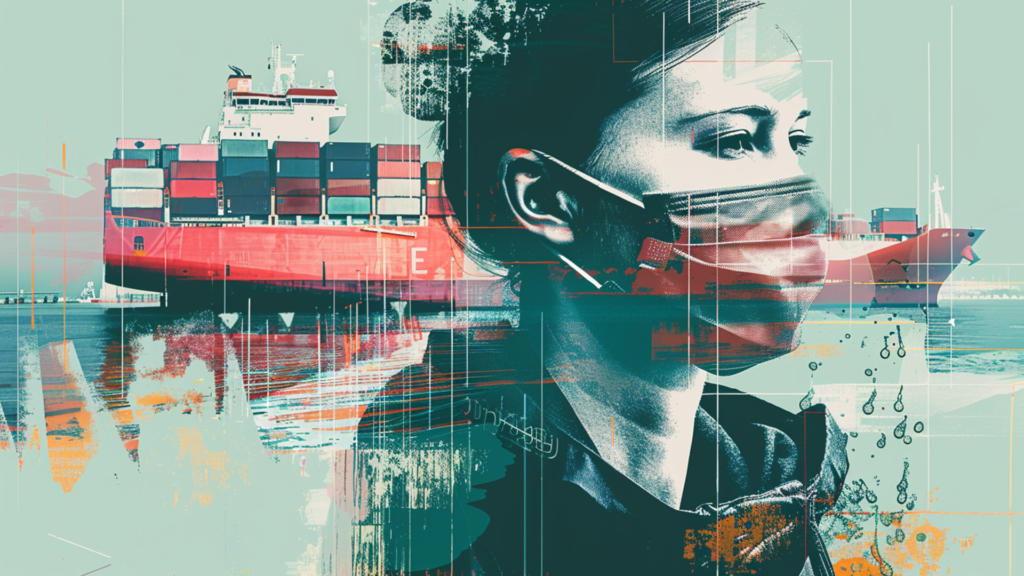Building Resilient Supply Chains for the Next Disruption
Welcome to Part Three in a 7-part series on the top seven supply chain trends for 2024. This content is adapted from our webinar, Top 7 Supply Chain Trends for 2024....
On January 16, 2025
Welcome to Part Three in a 7-part series on the top seven supply chain trends for 2024. This content is adapted from our webinar, Top 7 Supply Chain Trends for 2024. Click here to watch.
If you missed our first two trends, you can start with trend #1, The Continued Rise of AI and ML in Supply Chain Optimization, here. This week, we look at our #3 top trend for 2024, Building Resilient Supply Chains for the Next Disruption.

The 2024 Perspective on Supply Chain Resilience
The past few years have served as a stress test for supply chains globally—from the unprecedented challenges induced by the COVID-19 pandemic to the operational hiccups caused by historically low water levels in the Panama Canal. These events have illuminated a critical insight: the importance of building resilient, adaptable supply chains capable of withstanding future disruptions is more important than ever.
For supply chain managers, logistics professionals, business leaders, and anyone at the helm of navigating these complex networks, understanding the blueprint for resilience in the face of unpredictability is essential. The journey from 2020 to the present has transformed supply chains from delicate, intricately balanced systems, akin to a game of Jenga, to robust, adaptable entities ready to meet unforeseen challenges head-on.
In our webinar on the Top 7 Supply Chain Trends for 2024, Leigh Chesley discussed how the landscape of supply chains is evolving and the strategic shifts necessary to foster resilience. Key takeaways highlighted that in 2024, supply chain managers will need to prioritize flexibility, agility, and real-time visibility to preempt the next disruption successfully. The shift away from just-in-time manufacturing towards practices that buffer inventory and strengthen supply chains has marked a significant strategy adjustment in response to the pandemic.
But the walkthrough history served as a poignant reminder: whether it’s a global health crisis or natural phenomena affecting critical trade routes like the Panama Canal, supply chains are inherently exposed to a myriad of vulnerabilities. And while advanced technologies like AI and machine learning offer predictive capabilities, they can’t be solely relied upon to foresee every potential disruption.
Core Strategies for Building Resilient Supply Chains
The discussion illuminated several strategies that form the bedrock of resilient supply chains:
- Weathering the Storm with a Resiliency Plan: Having a plan is like having a sturdy umbrella during a downpour—an essential safeguard for when unexpected disruptions strike.
- Diversification of Suppliers: Cultivating a diversified network of suppliers ensures that if one link in the chain falters, another can seamlessly step in, minimizing operational disruptions.
- Holistic Approach to Risk Mitigation: Building resilience is not just about preventing risks but also about seizing opportunities for innovation and adapting to emerging threats and challenges.
While the path to bolstering supply chain resilience is laden with advantages, it’s crucial to acknowledge the inherent challenge
Never miss a story. Stay updated about Rebus news as it happens.
The Continuous Evolution of Supply Chain Management
Building a resilient supply chain is not about creating a fail-proof system that can anticipate and mitigate every conceivable risk. Instead, it’s about developing a flexible, adaptable framework capable of responding to and recovering from unforeseen events efficiently.
What we’ve seen in the last few years underscores the need for supply chains that can not only withstand shocks but also continue to adapt and evolve. As we look beyond this year, the agility to pivot in the face of new challenges will set leading supply chains apart from the rest.
Supply chain resilience is a continuous process of learning, adapting, and evolving. It’s about crafting a strategy flexible enough to accommodate the unexpected and robust enough to withstand the test of time and unforeseen challenges. For supply chain managers, embracing this mindset and investing in resilience today will pave the way for a more prepared, agile, and competitive future.
Conclusion
As the landscape of global supply chains continues to evolve, understanding and implementing the principles of resilience will become even more crucial. The journey towards resilience might be complex, but the rewards—sustainability, efficiency, and the ability to navigate the unforeseen—make it all worthwhile. Let’s continue to adapt, innovate, and build resilient supply chains that can withstand whatever the future throws our way.
Stay tuned for our next top 2024 supply chain trend: The Digital Twin Revolution.
Want to learn even more about Resilience? Watch our webinar Resiliency in the Supply Chain: Does it Really Mean What You Think it Means? with Ryan Uhlenkamp, COO of Longbow Advantage, and Josh Owen, CEO and Founder of Cycle Labs.
The 7 Supply Chain Trends for 2024:
- The Continued Rise of AI and Machine Learning in Supply Chain Optimization
- Creating Sustainable Value Through Circular Economy Practices
- Building Resilient Supply Chains for the Next Disruption
- The Digital Twin Revolution
- Transforming Logistics Through Emerging Technologies
- Mitigating Supply Chain Risk Through Real-Time Visibility and Control Towers
- The Role of People in Shaping the Supply Chain Future








